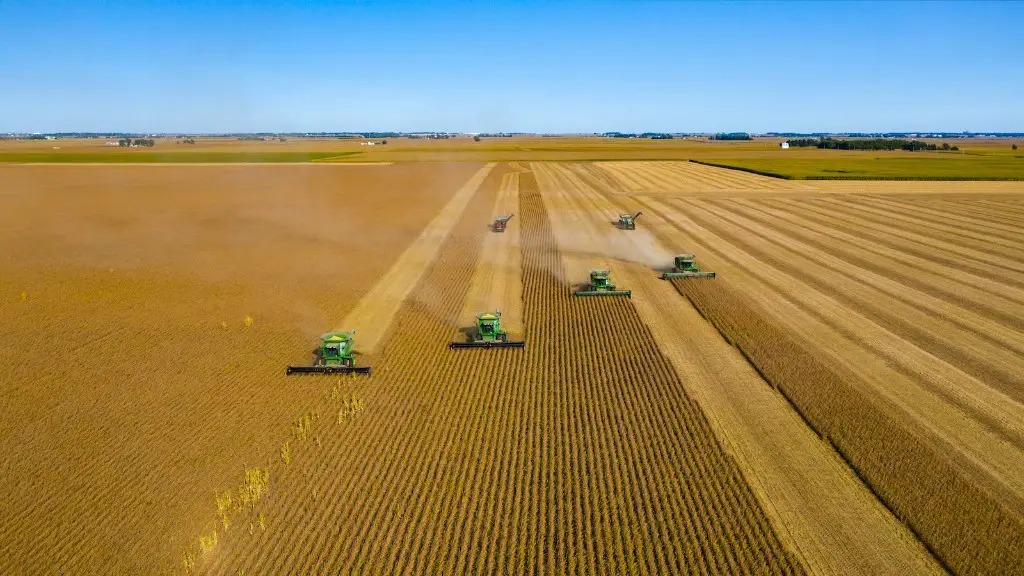Investing in regenerative agriculture can be a way to create a positive impact on our environment, while also earning a return on your investment. This type of farming involves practices that increase soil fertility, bring greater biodiversity to the area and reduce overall agricultural inputs. Regenerative agriculture has been gaining traction in recent years due to the increased recognition of its potential benefits. Here are some tips on how to start investing in regenerative agriculture.
Understand the Potential Benefits
It’s important to understand how regenerative agriculture is able to offer various benefits, building a strong case for why investing in it makes sense and makes economic as well as ethical sense. These benefits include increased soil fertility, increased water infiltration and retention, more resilient crops, and increased biodiversity of plant and animal life in the area.
This has significant implications for improving soil health, reducing pollutants in the air and water, and combating climate change. All of these benefits help farmers become more financially successful and improve the quality of life for everyone in the area.
Research What is Available
Once you understand the potential benefits of investing in regenerative agriculture, the next step is to research the opportunities that are available. This includes looking into companies that specialize in regenerative agriculture or consulting with experts in the field. Doing so can help you understand where the potential investments are and what kind of returns they can bring.
For example, some companies offer highly promising investments that can bring in returns of up to 20%. At the same time, some offer long-term goals such as connecting with other regenerative agriculture businesses and creating local networks to drive demand. It’s important to research the pros and cons of each opportunity before committing to any investment.
Direct vs. Indirect Investment Options
Investing directly in regenerative agriculture can be complicated and may require a significant commitment of time and resources. Instead, many investors choose indirect methods such as buying funds or stocks from companies that focus on regenerative agriculture. This can provide a more diversified portfolio that is less prone to large swings in the market.
In addition, investors can look into buying companies that produce agricultural inputs such as fertilizers, seeds, and equipment that is designed to encourage better land management. This can help you support regenerative agriculture without having to make a large direct investment in the process.
Seek Out Professional Advice
When getting started with investing in regenerative agriculture, it can be helpful to consult with experienced professionals such as financial advisors or agricultural consultants. They can provide insight into the potential opportunities and help you identify potential risks. In addition, they can offer assistance with evaluating the investments and establish a professional relationship with other stakeholders in the industry.
Before making any large investments, it is important to thoroughly evaluate the investment opportunities and consult with experts to ensure that you understand the potential risks as well as the potential rewards. This is especially true for longer-term investments where the success of the investment is not fully known until much later.
Consider the Funding Sources
Investing in regenerative agriculture requires some type of funding. This can come from a variety of sources, such as grants from the government or private organizations, individual investments from investors, and corporate investments from large companies. Each source of funding has its own pros and cons, so it’s important to review the details carefully before committing to any financial commitment.
It is also important to consider the tax implications of the investment. Some form of funding, such as grants or corporate investments, may be tax-exempt, while other sources of funding may be subject to tax liabilities. Consulting with a financial advisor before investing can help you better understand the financial implications.
Follow the Principles
When investing in regenerative agriculture, it is important to follow the principles of responsible investing. This includes considering the potential environmental, social, and economic impacts of each investment. It also means taking into account the associated risks, such as the potential for price volatility or market instability.
In addition, investors should ensure that their investments are consistent with the principles of regenerative farming. This can include investing in companies that produce organic or sustainable agricultural inputs, or investing in projects that promote the long-term health of the soil.
Focus on Long-Term Degrowth
When investing in regenerative agriculture, it is important to consider the long-term impacts of the investments. Many regenerative agriculture projects focus on degrowth, which is a strategy of reducing material consumption and waste, while also increasing efficiency and sustainability. By focusing on degrowth, investors can ensure that the investments will result in long-term benefits for the environment and society.
In addition, degrowth focuses on investing in technologies and products that are designed to reduce emissions and mitigate the impacts of climate change. By following this strategy, investors can ensure that their investments are making a positive contribution to the environment, while also helping to create a more sustainable future.
Develop a Sustainable Investment Plan
Developing a sustainable investment plan is an important part of investing in regenerative agriculture. This involves researching potential investments, evaluating the risks associated with each one, and setting realistic goals for the investments. The plan should also consider the financial goals of the investor and the potential impact of the investment on the environment.
In addition, investors should develop a diversification strategy. This can help to reduce the risk of investing in any one company or project, while also helping to spread out the returns among different opportunities. A diversified portfolio can be a powerful tool for achieving financial success.
Utilize Online Resources
Learning about investing in regenerative agriculture can be made easier with the help of online resources. Many investors turn to websites, blogs, and other forms of media to gain information on a variety of topics.These can help to provide insights into the potential opportunities as well as provide advice from experienced investors.
Investors can also utilize online forums to connect with other people in the field. These forums can provide a space to ask questions and gain knowledge from other investors who may have more experience in regenerative agriculture. In addition, many online resources provide access to experts who can provide personalized guidance on developing a successful investment plan.
Understand Tax Implications
As with any type of investment, investors should understand the potential tax implications of investing in regenerative agriculture. Certain investments, such as contributions to certain funds, may result in tax deductions, while other investments may be subject to taxation. Depending on your individual situation, the tax implications will vary, so it is important to consult with a professional accountant in order to understand the potential financial implications.
In addition, investors should also consider potential estate planning implications. Depending on the structure of the investment, it may have an impact on your estate plan and may even result in increased taxes. It’s important to consult with a professional advisor to understand the potential implications.
Evaluate the Risks
It’s important to understand the potential risks associated with investments in regenerative agriculture. This includes the potential risks of financial losses due to market changes, potential loss of land due to changing regulations, and potential legal risks. In addition, investors should understand how their investments may affect the environment.
It’s also important to consider the potential risks of investing in companies that produce agricultural inputs. These companies may not be directly involved in regenerative agriculture, but their products could have a negative impact on the environment if not used responsibly. Analyzing the potential risks and developing strategies to minimize them is key to successful investments.
Be Mindful of Legal Regulations
In many countries, there are laws and regulations that govern the investment of money and other assets. So, when investing in regenerative agriculture, it’s important to make sure that you are in compliance with the local laws and regulations. In some cases, this may mean working with a lawyer or other expert to understand the potential legal implications.
In addition, it’s important to be aware of any government incentives or tax credits that may be available. Knowing the available incentives can help investors maximize the potential returns of their investments and create a more favorable environment for investment in regenerative agriculture.





